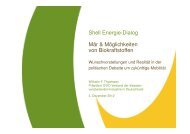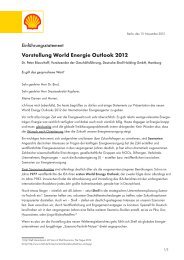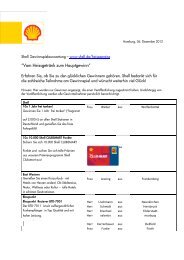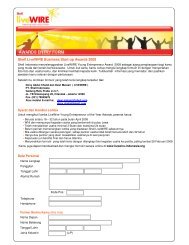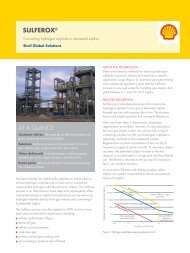Shell Global Solutions - CEM Brochure
Shell Global Solutions - CEM Brochure
Shell Global Solutions - CEM Brochure
Create successful ePaper yourself
Turn your PDF publications into a flip-book with our unique Google optimized e-Paper software.
Many carbon-intensive businesses need to make<br />
key decisions today to address the challenges,<br />
and opportunities, that they will face tomorrow.<br />
“Meeting the world’s growing energy<br />
needs in an environmentally responsible<br />
manner is a tremendous challenge.<br />
Technology is essential to answering<br />
that challenge.”<br />
Jeroen van der Veer, Chief Executive, Royal Dutch <strong>Shell</strong> plc
The <strong>CEM</strong> programme integrates technology<br />
and expertise from across <strong>Shell</strong> to help the<br />
organisation reduce its own and its clients’<br />
carbon footprints.<br />
The flexible and modular programme assesses<br />
a client’s energy use and carbon dioxide<br />
production and compares its current position<br />
with the most desirable operating practices.<br />
Strategies for mitigation are then proposed,<br />
which may include energy-efficiency or carbon<br />
optimisation programmes, and the trading of<br />
emissions allowances.<br />
Developing a road map<br />
The first step in a <strong>CEM</strong> programme often<br />
involves making an assessment of your energy<br />
and carbon position with a view to saving<br />
energy, reducing costs and lowering carbon<br />
dioxide emissions. Working closely with your<br />
key staff, we will first analyse your position<br />
and capabilities, and then review the response<br />
options. A gap analysis is performed, and the<br />
financial value of closing this gap is quantified.<br />
Creating a carbon and energy inventory<br />
Steps can be taken to validate your opportunities<br />
for carbon optimisation and energy-efficiency<br />
improvements in more depth. Baselining,<br />
benchmarking and equipment and systems<br />
performance gap analysis methodologies are<br />
important techniques here. The cost and ease of<br />
their implementation are also recorded.<br />
These assessments may include the following:<br />
• country-wide or enterprise-wide – portfolio<br />
analysis; fuel switching options; funding<br />
or offsetting within the Clean Development<br />
Mechanism (CDM) or with Joint<br />
Implementation (JI) projects; and change<br />
readiness indicators;<br />
• site-wide – benchmarking; site energy and<br />
loss assessments; utilities modelling; project<br />
analysis; and risk analysis; and<br />
• equipment performance – equipment<br />
gap analysis and benchmarking (for fired<br />
equipment, heat exchangers and turbines,<br />
for example); data mining; and process<br />
simulation for heat or energy flows.<br />
Figure 1: A cost-of-carbon-abatement study brings CO 2 emissions into the business planning process.<br />
The carbon and energy management offer framework<br />
Evaluating strategic choices<br />
Investment options undergo a full cost–benefit<br />
analysis that takes account of the required<br />
operational or capital expenditure, the impact<br />
on carbon dioxide emissions, and energy<br />
cost savings or carbon allowance prices. This<br />
is a complex analysis, but a cost-of-carbonabatement<br />
study can help by prioritising<br />
possible energy saving and emissions<br />
mitigation measures in terms of the amount<br />
of carbon dioxide saved and the cost of the<br />
project work needed to achieve the saving<br />
(Figure 1).<br />
Strategic choices to be made could include<br />
carbon dioxide abatement through make-or-buy<br />
decisions for power; fuel switching evaluations;<br />
and heat/power technologies such as<br />
cogeneration.<br />
Delivering on the strategy<br />
Depending on the findings of the analyses<br />
carried out previously, we may recommend<br />
activity across three key areas: energy<br />
efficiency, carbon optimisation and<br />
emissions trading.<br />
Energy efficiency solutions may include best<br />
available technology assessments, hydrocarbon<br />
management reviews, integrated equipment<br />
performance evaluations, catalyst optimisation,<br />
as well as our proven energy-efficiency<br />
programme. Energy cost savings are typically<br />
achieved through the intelligent application of<br />
technology and by modifying behaviours and<br />
processes. Programmes can be structured around<br />
minimal capital expenditure for rapid payback.<br />
<strong>Shell</strong>’s technology solutions<br />
<strong>Shell</strong> has been active in deploying<br />
technology across three key areas in order<br />
to reduce emissions:<br />
a) improve energy efficiency – examples<br />
include energy optimisation and<br />
operational-excellence programmes;<br />
Carbon optimisation solutions may stem<br />
from an earlier cost-of-carbon abatement<br />
study. A masterplan could be considered that<br />
provides a structured approach to delivering<br />
carbon mitigation implementation proposals<br />
in the context of your business’ operating<br />
environment. Implementation activities may<br />
include optimising catalysts, sequestration<br />
or biofuels opportunities, carbon dioxide<br />
mineralisation, and carbon dioxide sales.<br />
Through our links with <strong>Shell</strong> Trading, one of<br />
Europe’s leading emissions trading desks, we<br />
can also offer value-adding services around<br />
the Kyoto Protocol’s flexible mechanisms.<br />
For instance, we can help you to trade<br />
allowances. We can also support you as you<br />
b) generate energy cleanly – introduce<br />
renewable energy sources or switch to<br />
less carbon-intensive fuels; and<br />
c) mitigate emissions – prevent the release of<br />
carbon dioxide into the environment by<br />
capturing it for sale to industrial users or for<br />
underground storage.<br />
Figure 2: <strong>Shell</strong> technology options that are available now – and those that are likely to be<br />
commercialised in the future.<br />
seek to identify qualifying opportunities for JI<br />
and CDM projects, and to register them.<br />
Ongoing support<br />
To help capture value effectively and<br />
provide sustainable results, we can also<br />
offer implementation assistance and ongoing<br />
support. For instance, we can assist with<br />
detailed change-management programmes,<br />
build in operator training programmes and<br />
facilitate knowledge transfer.<br />
We also offer a sophisticated energy<br />
management system. This is a combination<br />
of structured management processes and<br />
monitoring tools – linked to real-time data<br />
– that aims to operate a plant and its energyusing<br />
systems at their most energy-efficient<br />
operating points. Human intervention is an<br />
integral part of the energy management<br />
system and so the data is made available to<br />
operations and production staff for them to<br />
monitor and, where necessary, take action.


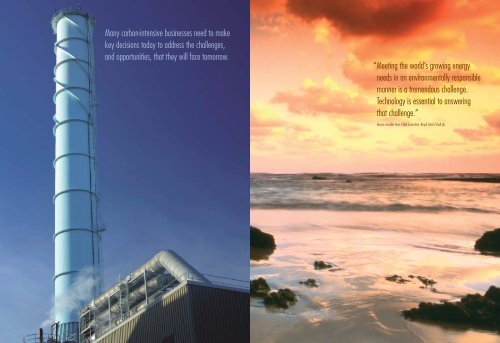

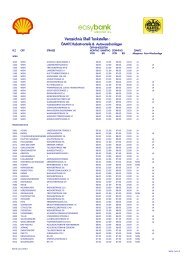
![Download Shell AutoGas Stationen [Stand: Januar 2013] (PDF](https://img.yumpu.com/9982753/1/190x245/download-shell-autogas-stationen-stand-januar-2013-pdf.jpg?quality=85)
